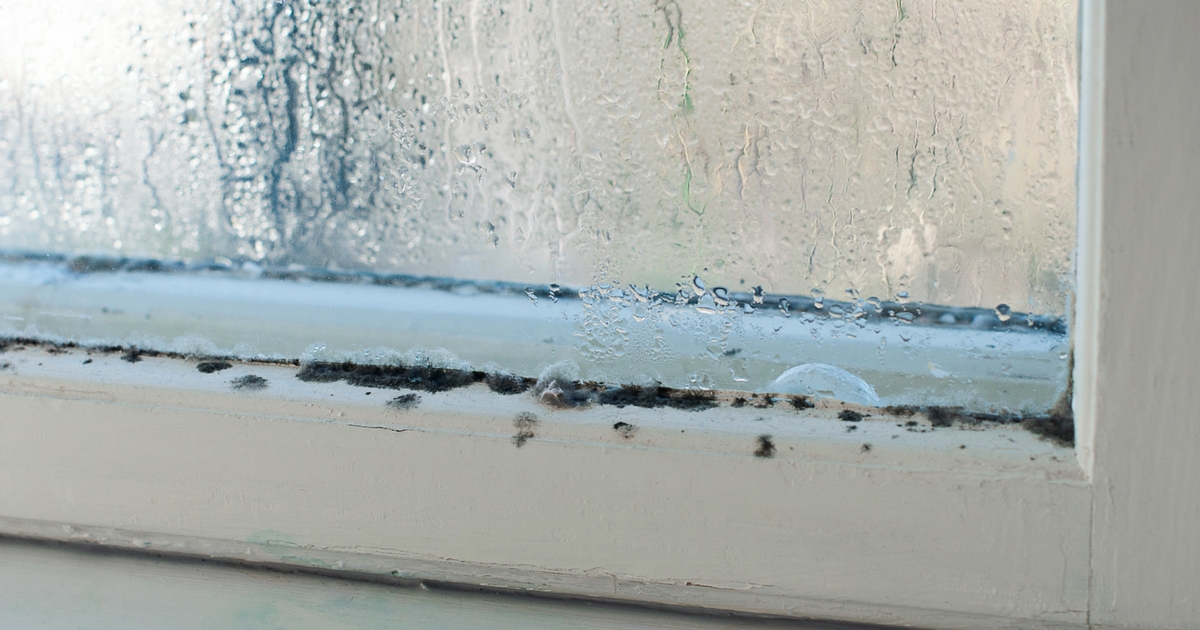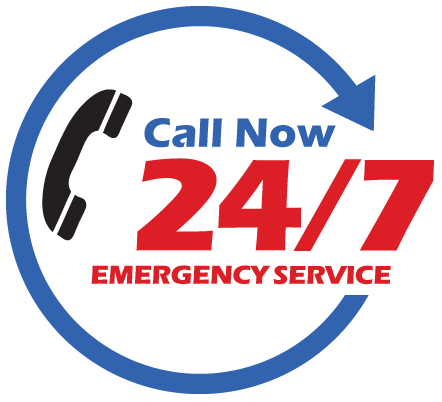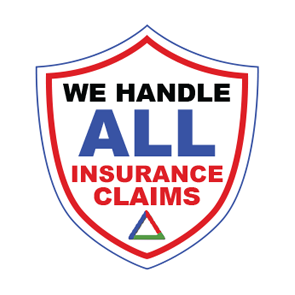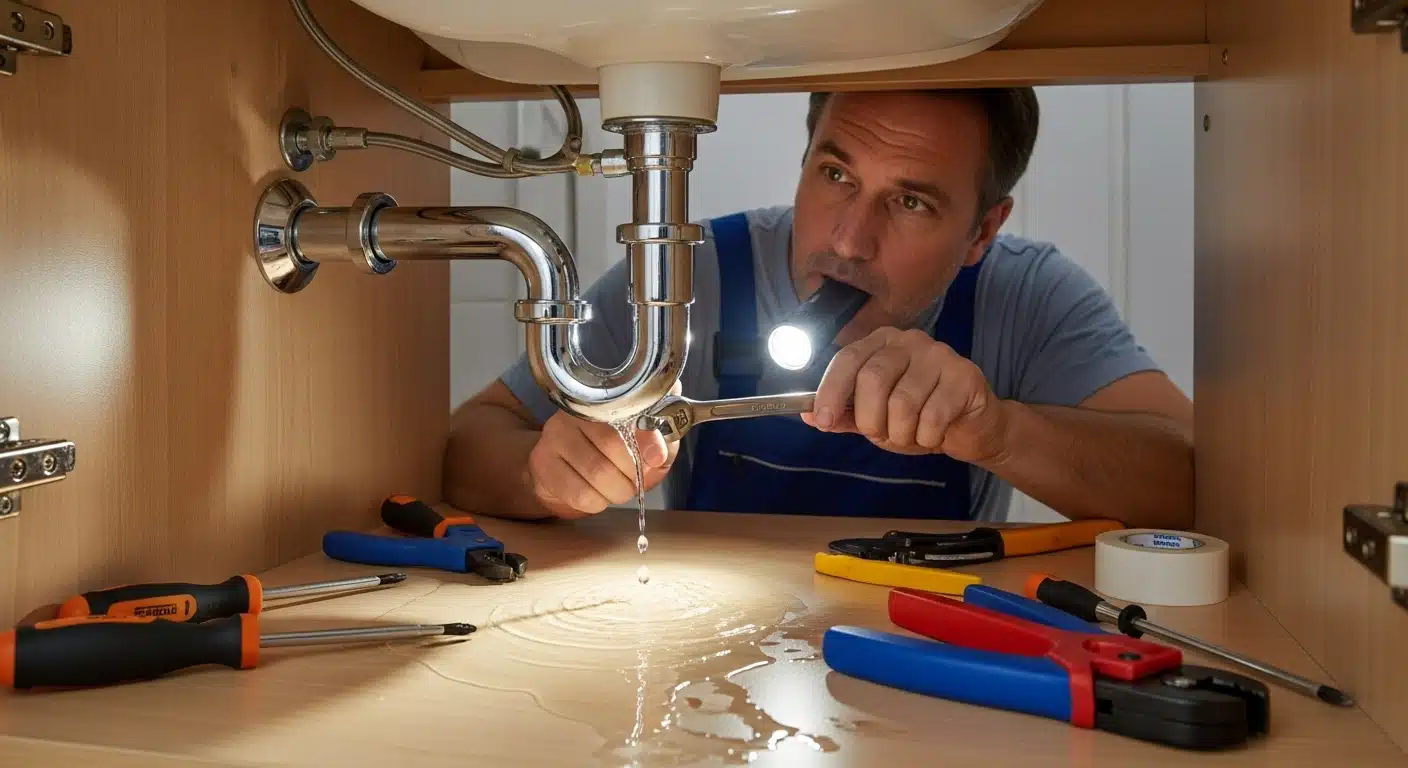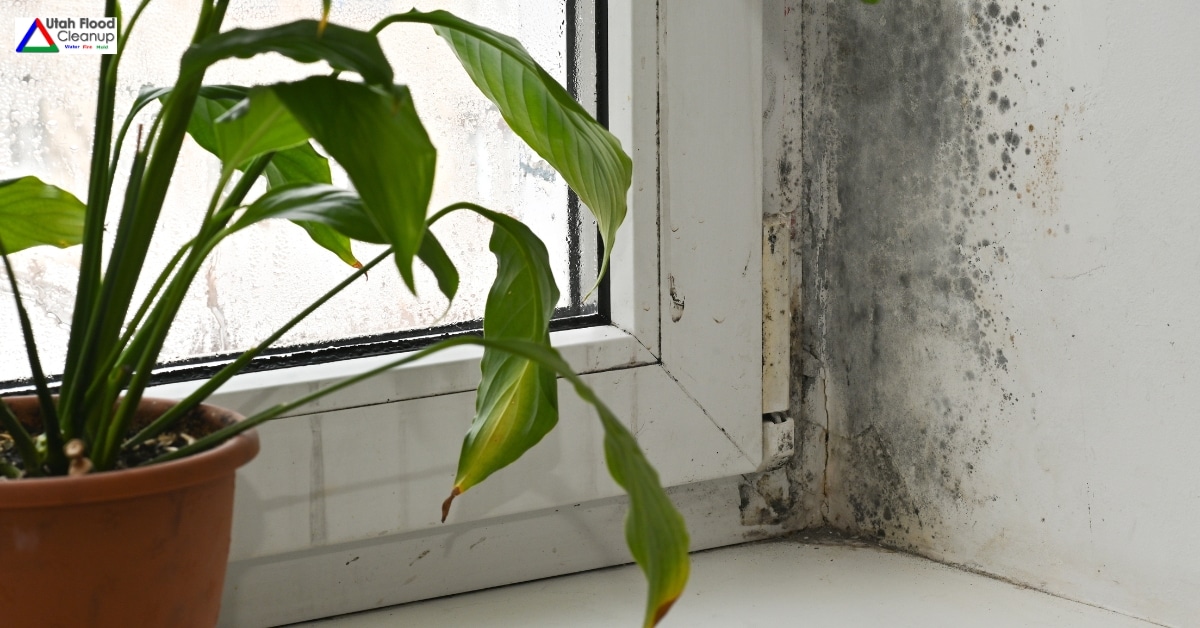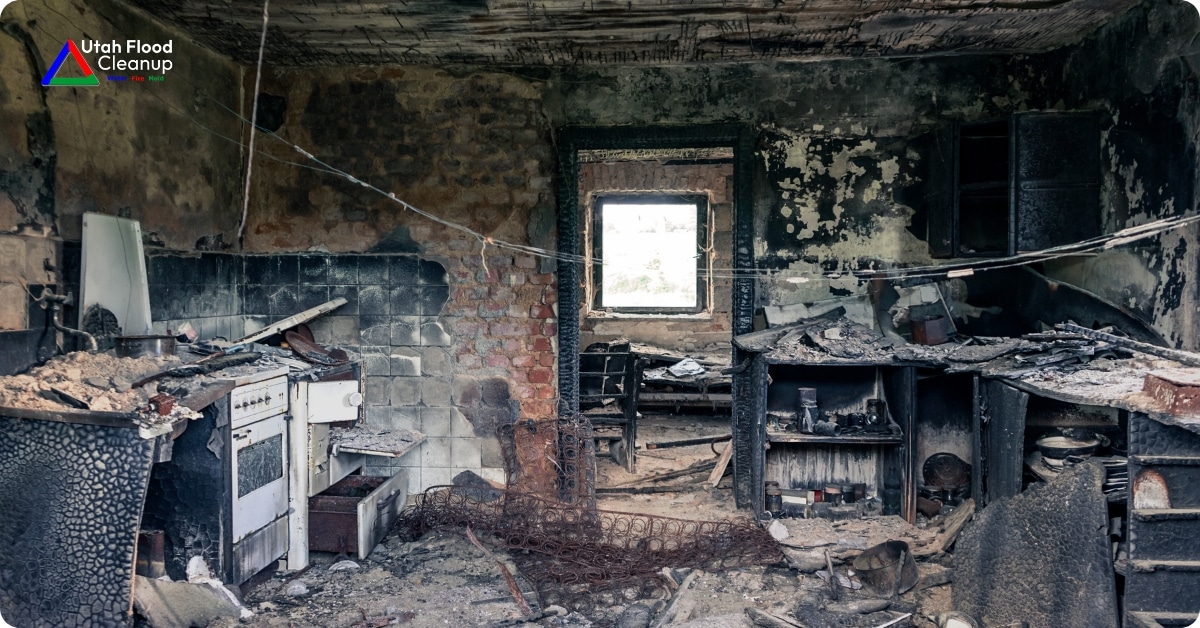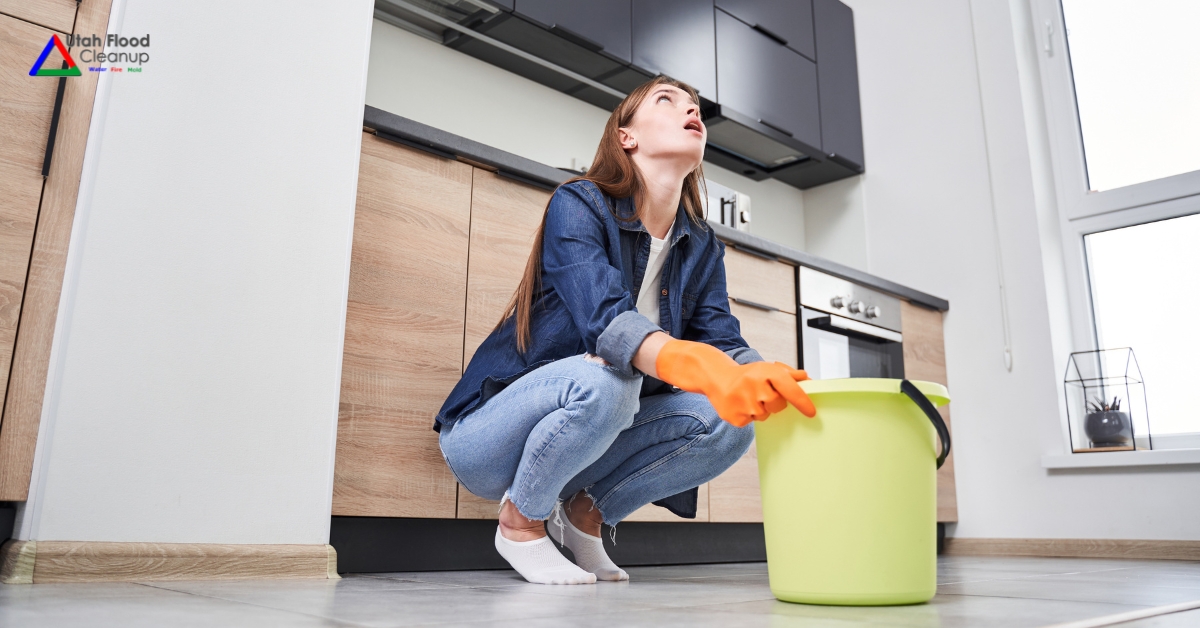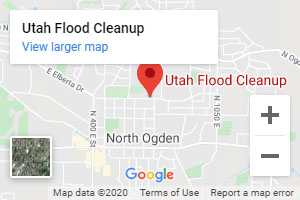The single greatest threat that residential homeowners face is water penetration. One of the primary reasons is that when water gets into a structure it can spur dangerous mold growths. Mold can reproduce and spread quickly inside walls where property owners cannot see them. This makes house mold detection very difficult for non-professionals. But if you have suffered flooding, roof leaks or just don’t have inadequate steam ventilation in the bathroom, it’s important to have a professional inspection conducted to ensure you and your loved ones aren’t exposed to these allergy-causing health hazards. At Utah Flood Cleanup, our trained and professional mold remediation specialists have the equipment and experience to identify mold and get it out of your home.
Common Places Mold is Found, Warning Signs, and How to Detect it
Mold often stays hidden behind your walls and under the floorboards. It has the ability to take root after water penetration and spread when a material remains moist for only two days. It’s important to remain cognizant about these items.
- If you discover dark, wet areas on your floor, ceiling or walls, these are definite signs of a mold
- While many growths remain hidden, you can detect mold by its unpleasant smell.They can generate musty smells and mildew odors.
- Mold can flourish in high humidity areas such as bathrooms. Anytime you see condensation buildup, that should trigger an inspection.
- If the people living in your home are experiencing respiratory irritation or allergy-like symptoms such as coughing, sneezing or wheezing, you may have mold growing.
Many times, it takes a trained specialist to identify and safely remove dangerous molds. Keep in mind that house mold removal poses a health risk and should be left to professionals. It’s important not to wait until the house mold dangers are visible or obvious. Periodic inspections may prove worthwhile.
Negative Effects of Mold
Property Damage: Molds feed on the very sources they grow on and ultimately damage or destroy foundations, drywall, beams and roofs. They can also infect HVAC systems.
Health Dangers: Mold poses a health danger to human beings. Infants, children, the elderly, people with asthma, allergies, and severe illnesses are especially at risk. They are likely to cause a range of allergic reactions, headaches, trouble breathing, skin rashes, irritation and heighten asthma issues.
Residential Mold Restoration / Removal / Remediation
Our trained professionals at Utah Flood Cleanup have the experience to identify and eradicate the dangerous molds that may be hidden beneath the surface of Utah homes. Experts at the CDC and EPA agree that mold exposure is an inherent human health problem. Black molds are classified as highly toxic and have been discovered in numerous homes across the country. The seriousness of the mold issue has prompted Utah Flood Cleanup to adopt and follow rigorous EPA and CDC remediation standards.
Moisture Inspection: Our mold specialists use precision equipment to gauge humidity, temperature and GPP readings to generate a detailed moisture map that helps identify the affected areas. We, not only clean up the issue, we locate the source of the problem.
Mitigation: We understand how deeply a mold infestation can affect you and your loved ones. Our team will take the proper mold abatement steps to limit the spread to furniture and personal items. We do our best to protect these items in your home. Naturally, our number one priority is your health and safety and we won’t leave you in a compromised situation. That’s why we extract appropriate water samples and use EAP-approved mold deterrents. Our team will also keep you fully informed throughout the process.
Utah Residential Mold Remediation Professionals at Utah Flood Cleanup
If your home has been compromised by moisture, water penetration, sewage backup or you are concerned mold may be spreading inside your home, contact Utah Flood Cleanup immediately. We have been offering our many services to the good people of Utah since 1992 and are ready to help you 24/7. We offer free phone consultations and free onsite inspections for water incidents covered by insurance. Our work comes with a 2-Year Guarantee and financing options are available to homeowners. Contact our residential and commercial mold removal professionals today at (801) 416-2666
FAQ's
How do I know if I have mold in my home?
Mold in your home can be detected through several signs. These can include visible mold growth, which can present itself in various colors, from black and green to white and orange. Other signs include a distinct musty odor, discoloration or staining on walls and ceilings, and worsening of allergies or respiratory symptoms. To confirm a mold issue in any building, a professional inspection from a company like Utah Flood Cleanup can provide a detailed mold assessment.
What are the health risks associated with residential mold?
Exposure to mold in a residential setting can lead to various health issues. According to the CDC, some people are sensitive to molds and may experience symptoms like stuffy nose, wheezing, red or itchy eyes, or skin rash. People with allergies or asthma may experience more intense reactions. Prolonged exposure to high levels of indoor mold can also impact the respiratory health of otherwise healthy individuals.
How does mold remediation work in a residential setting?
Mold remediation in a residential setting involves a multi-step process to ensure the complete removal of mold from the property and prevention of future infestations. The process begins with a professional inspection to assess the extent of mold infestation. The next steps involve isolating the affected area, removing moldy materials, and cleaning and sanitizing the area with professional-grade detergents. The cleanup process also includes addressing the source of moisture that led to the mold problem, such as repairing plumbing leaks.
What are the steps involved in the mold remediation process for a home?
Mold remediation in a home involves several key steps. First, a professional inspection is conducted to identify and assess the mold infestation. Then, the affected area is contained to prevent the spread of mold spores during the remediation process. Next, moldy materials are removed and discarded, and the remaining area is thoroughly cleaned and sanitized. Finally, the water or moisture source causing the mold growth is identified and corrected to prevent future mold problems.
How long does residential mold remediation typically take?
The duration of the residential mold remediation process can vary depending on several factors, including the extent of the mold infestation, the size of the property, and the amount of repair work needed. However, typical mold remediation projects can take anywhere from a few days to a couple of weeks.
How can I prevent mold from coming back after remediation?
After mold remediation, preventing recurrence involves controlling the moisture levels in your home. This can include repairing any leaks in your plumbing or roof, improving ventilation in bathrooms and kitchens, using dehumidifiers in damp areas, and regularly inspecting your home for signs of mold. Regular maintenance and quick response to any water damage can also keep mold from returning.
Is it safe to stay in my home during the mold remediation process?
In most cases, it's safe to stay in your home during the mold remediation process, especially if it's confined to a small area. However, for larger infestations or if individuals in the household have severe allergies or respiratory conditions, it may be recommended to temporarily stay elsewhere. Professionals, like Utah Flood Cleanup, ensure safety measures are in place to prevent the spread of mold spores to other areas of the home during the remediation process.
What equipment and products are used during residential mold remediation?
Professional mold remediation involves the use of several pieces of equipment and products. These may include air scrubbers to filter the air, HEPA vacuums for cleaning, commercial-grade dehumidifiers to control moisture, and EPA-registered antimicrobial detergents for sanitization. Personal protective equipment is also used by professionals during the process for safety.
Are there any DIY methods for mold remediation, or should I hire a professional?
Small areas of mold can often be treated with DIY methods using household cleaners and proper safety gear. However, larger infestations, or mold caused by sewage or other contaminated water, should be addressed by a professional to ensure complete removal and safety. Incorrect treatment of mold can lead to recurrent infestations and potential health risks.
How much does residential mold remediation cost on average?
The cost for residential mold remediation can vary widely, depending on factors like the extent of the mold growth, size of the area, and if any structural repairs are needed. On average, professional mold remediation can range from a few hundred dollars to several thousand. At Utah Flood Cleanup, we provide a detailed estimate after conducting a thorough inspection of the property.
Facts About Residential Mold Remediation
-
Residential mold remediation refers to the process of removing and treating mold growth in homes and other residential properties.
-
Mold remediation is necessary to prevent health issues and structural damage caused by mold.
-
Mold can grow in areas with excess moisture, such as bathrooms, basements, and areas affected by water damage.
-
The first step in residential mold remediation is identifying the source of moisture and fixing it to prevent further mold growth.
-
Professional mold remediation companies use specialized equipment and techniques to safely remove mold and prevent its spread.
-
The remediation process may involve containment of the affected area, removal of mold-infested materials, thorough cleaning, and application of mold inhibitors.
-
It is important to hire a certified and experienced mold remediation company to ensure proper and effective treatment.
-
Regular inspection and maintenance of residential properties can help prevent mold growth and the need for extensive remediation.
-
It is crucial to address mold issues promptly to protect the health and well-being of residents and maintain the value of the property.
